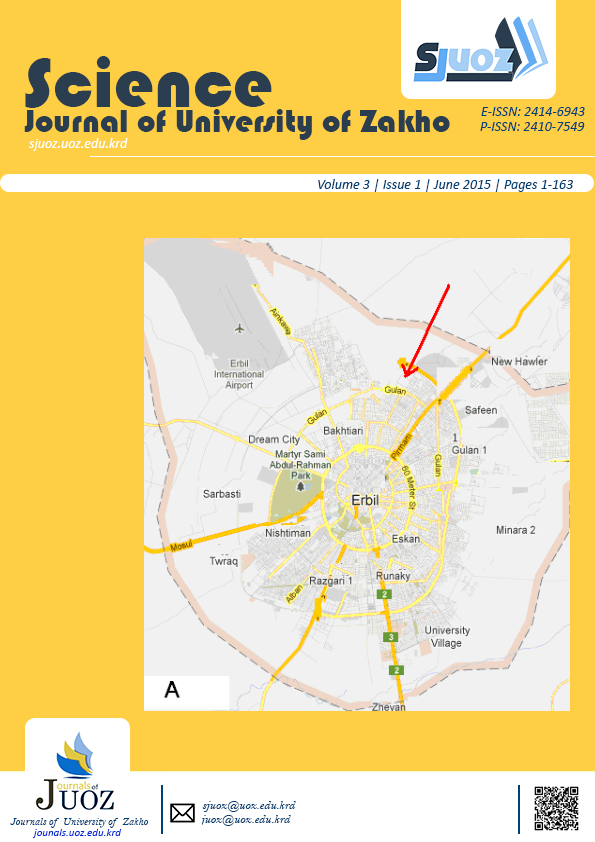Abstract
Toxoplasmosis is an important zoonotic diseases in human and animals. The disease caused by the protozoan Toxoplasma gondii. It is an economically important disease of livestock, especially sheep and goats. The present work aimed to diagnose toxoplasmosis in sheep using two methods, serological (ELISA) and molecular tools (PCR) and comparing the serological data with the molecular results to determine the sensitivity and the specifity of the molecular tools. The study was carried out at Duhok Research Center, University of Duhok. Ninety sex whole blood samples were collected from in aborted ewes in Duhok governorate during the period September 2013- September 2014.The samples were collected from different localities including Aqra, Dohuk district, Shikhan and Zakho The serological tests showed that22(22.91 %) of the samples were positive from examined sheep serum by ELISA, while 23(23.93%) by using PCR assay. PCR was performed on all DNA of sheep blood samples to amplify B1 gene as a target sequence. Good correlation between the results of PCR and ELISA were detected, there’s no statistically significant difference, It can be concluded that ELISA combined with the PCR technique is a recommended tool for accurate diagnosis of Toxoplasmosis but PCR is more specific for detection of T. gondii with sensitivity of 95.45 % and specificity of 97.29%.When taking the ELISA as a reference test. The results of PCR assay showed it’s important in the diagnosis of the carrier infected cases more than ELISA techniques.
Full text article
Authors
Copyright (c) 2015 Farhad B. Mikaeel, Jassim Abdo, Lokman T. Omer

This work is licensed under a Creative Commons Attribution 4.0 International License.
Authors who publish with this journal agree to the following terms:
- Authors retain copyright and grant the journal right of first publication with the work simultaneously licensed under a Creative Commons Attribution License [CC BY-NC-SA 4.0] that allows others to share the work with an acknowledgment of the work's authorship and initial publication in this journal.
- Authors are able to enter into separate, additional contractual arrangements for the non-exclusive distribution of the journal's published version of the work, with an acknowledgment of its initial publication in this journal.
- Authors are permitted and encouraged to post their work online.
